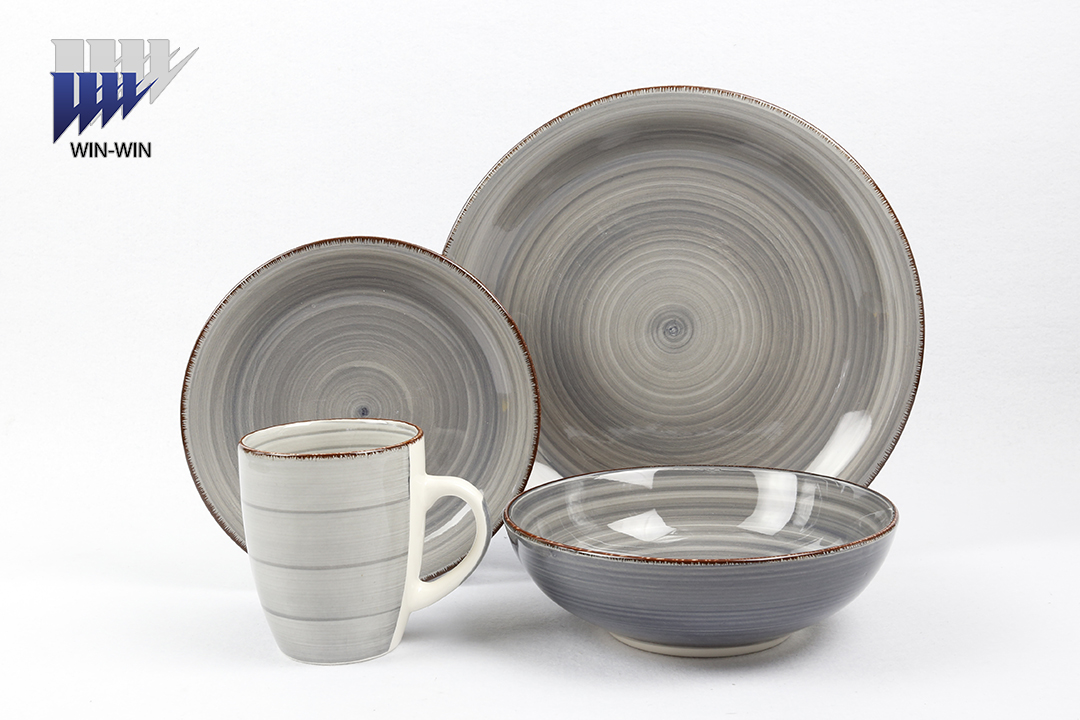1. The low-temperature flame is not clear and the combustion is insufficient, resulting in carbon deposition, which will be burned at high temperature with the increase of excess air coefficient or at the end of reduction or cooling period, leaving pinholes or air bubbles on the glaze.
2. The strong reduction atmosphere is too thick and the strong reduction time is too long, causing the blank glaze to absorb too much carbon and carbide, and these carbon and carbide are oxidized at the end of reduction or cooling period, thus leaving the glaze surface Pinholes or air bubbles.
3. In the oxidative decomposition stage, if the temperature rises too fast, the oxidation temperature is too low, or the oxidation atmosphere is insufficient, the organic matter, carbon and iron sulfide are not completely oxidized and enter the reduction period, then these organic matter, carbon and iron sulfide are in the It may be oxidized at the end of reduction or cooling period to produce glaze pinholes or bubbles.
4. In the oxidative decomposition stage, if the temperature rises too fast and other reasons, the carbonate is not completely decomposed and the crystal water of the clay raw material is not completely removed. When the firing enters the high temperature stage, the green body appears liquid phase and the glaze surface has begun to melt. The gases produced by the reaction cannot escape freely from the glaze, so glaze pinholes or bubbles appear.
5. For low-temperature fast-fired ceramics, although impurities such as organic matter, carbon, iron sulfide, and carbonate in the billet have been completely oxidized and decomposed before the glaze is melted, due to the rapid temperature rise, the gas produced will be released before the glaze is melted. It cannot be discharged completely, and there is still a large amount of gas discharged after the glaze is melted. These gases break through the glaze surface and cause pinholes in the glaze surface. Bubbles are formed when the gas fails to rush out of the glaze surface. Because the heating rate is too fast, it is difficult for the glaze to level off. The pits left on the glazed surface will still leave glaze pinhole defects on the glazed surface even if the high temperature holding time is extended.
6. The firing temperature is not enough, so that the glaze is not fully evenly distributed, resulting in pinholes on the glaze surface.
7. Forced ventilation, excessive dust particles and water vapor may cause pinholes or air bubbles in the glaze.
8. When the glaze surface is vitrified, the temperature rises too fast or the firing temperature is too high, the glaze surface will boil and cause glaze pinholes or air bubbles.
9. When the green body is fired in a reducing atmosphere, attention should also be paid to the selection of two important temperature points, that is, the temperature point from a strong oxidizing atmosphere to a strong reducing atmosphere (atmosphere conversion temperature) and the temperature from a strong reducing atmosphere to a weak reducing atmosphere. temperature point. The atmosphere in the kiln and its strength are determined by the content of free oxygen and carbon monoxide in the flue gas. When the free oxygen concentration is 8%-10%, it is called a strong oxidizing atmosphere, and when the free oxygen concentration is 2%-5%, it is called A weak oxidizing atmosphere is called a reducing atmosphere when the free oxygen concentration is less than 1%, and a carbon monoxide concentration of 1%-7% is called a reducing atmosphere, and a carbon monoxide concentration of 2%-6% is called a strong reducing atmosphere, and the carbon monoxide concentration is 1%-2 % is called a weak reducing atmosphere. The conversion temperature should be properly selected according to the formula of the blank glaze. If the conversion temperature is too low or too high, that is, if the conversion temperature is too early or too late, it may cause pinholes or bubbles on the glaze surface of the product, as well as defects such as cloudy yellow and smoke.
10. The firing atmosphere also has a great influence on the pinholes of the glaze surface. The oxidizing atmosphere can promote the chemical reaction of the glaze melt and the combustion of organic matter and carbon, which is conducive to the rapid removal of gas before the glaze melts, thereby avoiding the formation of glaze. Pinholes or bubbles on the surface, while the reducing atmosphere inhibits the oxidation reaction in the glaze and the combustion of organic matter and carbon, causing the discharge of the gas to be delayed until the glaze is melted (especially zirconium glaze), resulting in pinholes or bubble.
Post time: Dec-30-2022






